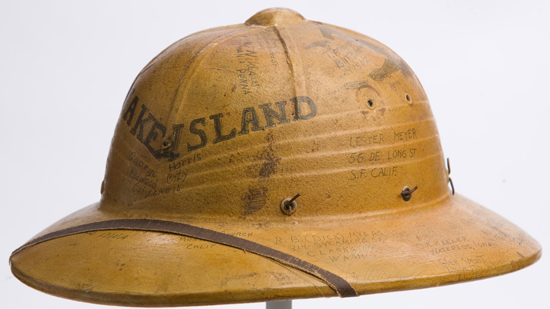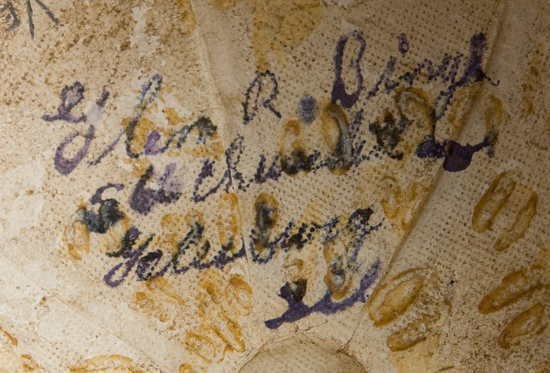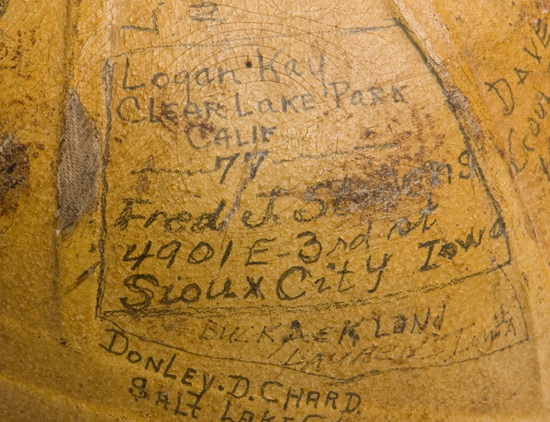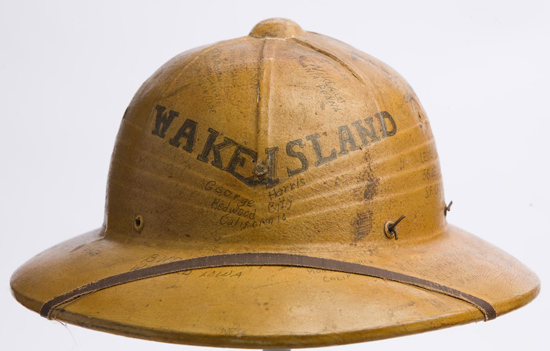Back in late 2012 we offered a quick look at how the American pressed fiber helmets were used as a canvas for some very talented artists. One of the helmets that we included was one from Wake Island, which featured a number of signatures. Now some new, and fascinating, information has come to light on the helmet from a reader.
Mark Hubbs responded recently that:
“The ‘Wake Island’ sun helmet is by no means ‘questionable.” I have personally handled it. However it is not a military helmet. It was issued by the Morrison-Knudsen construction company to its employees who were on Wake when the Japanese attacked on Dec 8th, 1941. Its owner brought the helmet home after spending the remainder of the War in Japanese prison camps. It is signed by over 50 men who were also captured at Wake. Over half of the men who autographed this helmet did not survive the War.”
In our correspondence with Mr. Hubbs he added:
“It may not be clear in the photos, but this is the pattern that does not have a fabric layer on the outside. It was also white when it was new. Mr. Binge (the owner of the helmet) varnished it after the war to protect the autographs that are on it, thus giving it the current color.”

Mark Hubbs has written more about this helmet on his Eras Gone blog, and we encourage anyone interested in these helmets to read his wonderful story of this helmet. The fact that it has survived so long is just one part of a very amazing story:
“Glen Binge brought his helmet home at the end of World War II. The helmet bears the names and addresses of over fifty of his comrades. This was not an unusual thing. Many soldiers kept their helmets as souvenirs. But Glen Binge was not a soldier, or a marine. He was an American civilian who had beaten the odds to survive one of the most famous battles of World War II and three and a half years as a POW in Japan’s most infamous prisoner of war camp. The cloth covered fiber sun helmet that survived and came home with him is a puzzle. How could such a fragile item survive the rigors of combat and a brutal captivity, especially when over half the men who signed it died at the hands of the Japanese?”
Read the rest of the story: A Wake Island Helmet – Part One, “Dodging Hell in Small Parcels”

Glen R. Binge was the first to sign his helmet. His is one of the few signatures on the inside. (Courtesy Glen Binge Family)

Logan Kay and Fred Stevens signed together in a box that separates them from other signers. Notice the “77.” That is number of days that Kay and Steven eluded the Japanese and avoided capture on Wake Island. (Courtesy Glen Binge Family)
Our thanks to Mark Hubbs for shedding light on this helmet. Far too often the story of an item is lost to the ages, and we are thankful and hopeful that the legacy of this particular piece will be preserved.

